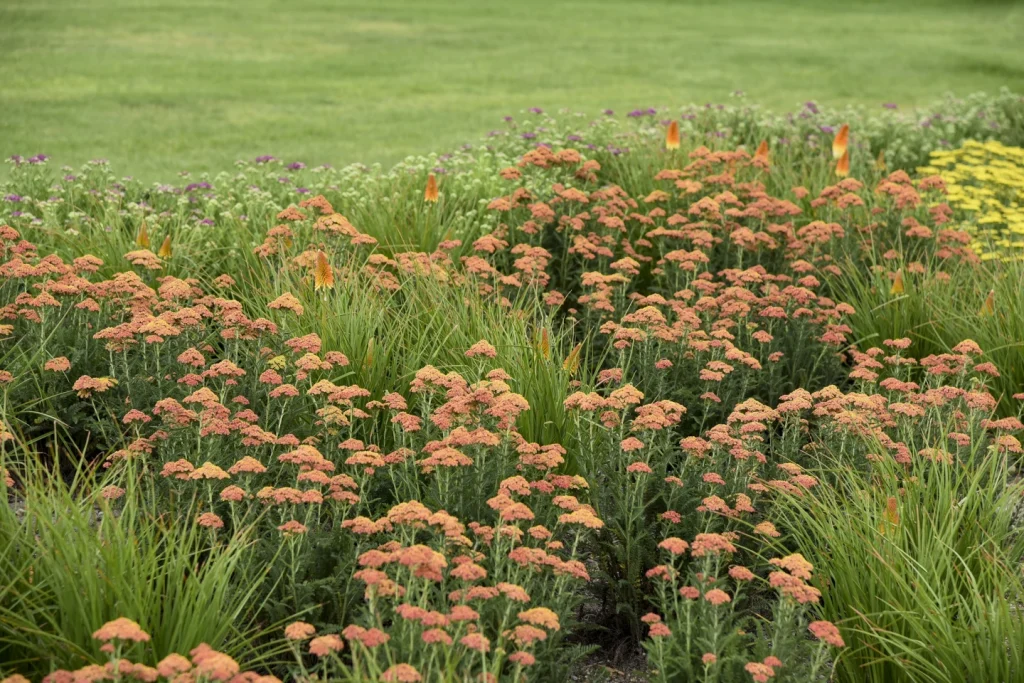With the dawn of a new year, the world eagerly anticipates the emergence of fresh trends that will shape various aspects of our lives.
In 2024, the Pantone Color of the Year, “Peach Fuzz,” is poised to exert its influence across diverse spheres, and its impact on gardening is particularly noteworthy.
The Pantone Color Institute, a renowned authority in the realm of color trends, has been instrumental in guiding global color preferences since its inception in 2000.
Through its universal language of color, the institute facilitates crucial decision-making processes for brands and manufacturers at every stage of their workflow.
As the arrival of spring approaches, the pervasive presence of peach-hued attire, footwear, home decor, and wall paints is set to dominate the market, as designers strive to cater to the insatiable appetite for the latest trends among the public.
Concurrently, nurseries will witness an influx of peach-colored plants, reflecting the widespread embrace of this captivating hue.
While the development of new plant varieties necessitates a significantly longer timeframe, often spanning a decade or more, in comparison to the production of textiles, it is evident that garden centers will showcase an extensive assortment of existing peach-toned plants in the upcoming season, with many of them being novel additions to our botanical landscape.
The convergence of fashion and horticulture is a testament to the profound impact of color trends on diverse facets of human expression and creativity.
The emergence of “Peach Fuzz” as the Pantone Color of the Year serves as a catalyst for innovation and experimentation, inspiring designers, horticulturists, and enthusiasts alike to explore the myriad possibilities offered by this enchanting hue.
As we embark on this new chapter defined by the allure of “Peach Fuzz,” it is imperative to recognize the interconnectedness of our surroundings and the profound influence of color on our perceptions and experiences.
The convergence of fashion and gardening epitomizes the harmonious interplay between nature and human ingenuity, underscoring the enduring significance of color as a conduit for artistic expression and cultural resonance.
In conclusion, the designation of “Peach Fuzz” as the 2024 Pantone Color of the Year heralds a transformative period characterized by the widespread proliferation of this captivating hue across various domains.
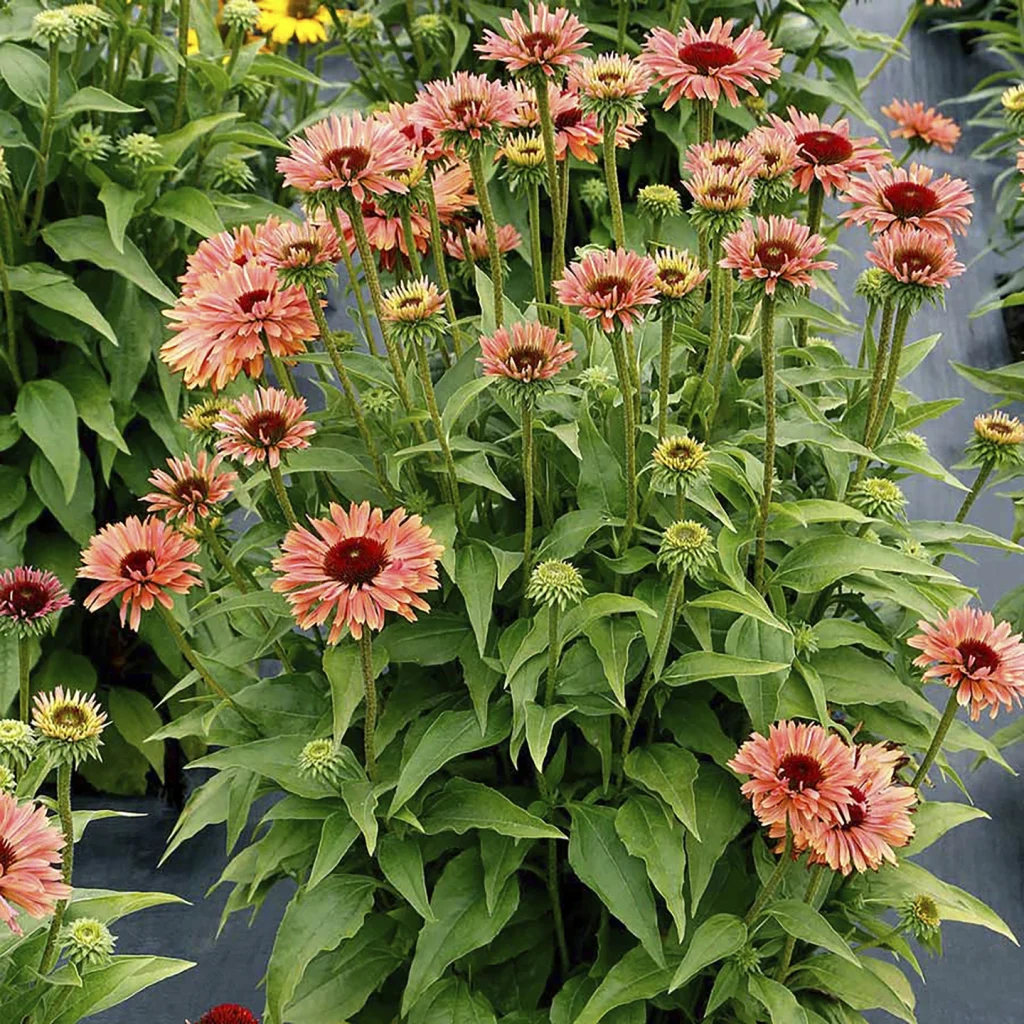
Its impact on the realm of gardening is poised to be profound, as horticultural enthusiasts and professionals alike embrace the enchanting allure of peach-toned flora.
As we embrace this new era of color trends, let us revel in the boundless creative possibilities that “Peach Fuzz” affords, and celebrate the enduring influence of color in shaping our collective aesthetic sensibilities.
The world of horticulture is a diverse and captivating realm, filled with a myriad of flora that never fails to enthrall and inspire.
Among the many species that grace our gardens and landscapes, roses and shrubs hold a special place, offering not only aesthetic beauty but also a host of practical benefits.
In this essay, we will delve into the realm of roses and shrubs, exploring the unique characteristics and virtues of select varieties that have captured the attention and admiration of gardening enthusiasts.
Let us begin with the enchanting world of roses, a symbol of love, beauty, and elegance. Among the vast array of rose varieties, two stand out for their exceptional attributes: At Last and Peach Drift.
At Last, a resplendent light-orange shrub rose, embodies a perfect amalgamation of beauty and functionality.
Its highly fragrant blooms, coupled with low-maintenance and disease-resistant qualities, make it a sought-after choice for gardeners.
Furthermore, its extended blooming period from early summer through fall in zones 5-9 ensures a continuous spectacle of natural splendor.
Similarly, Peach Drift presents a compelling case with its disease resistance and prolific blooming from spring through frost.
Its spreading habit makes it an ideal groundcover rose, particularly suitable for hillsides or open areas in zones 4-11.
The versatility and resilience of these roses not only add charm to outdoor spaces but also contribute to sustainable landscaping practices, requiring minimal intervention and resources for upkeep.
Transitioning to the realm of shrubs, we encounter a diverse array of species that offer an array of ornamental and practical benefits.
The Double Take flowering quince emerges as a standout contender, boasting long-blooming characteristics, low-maintenance requirements, and remarkable heat- and drought-tolerance.
Its soft peach flowers, devoid of thorns, render it not only visually appealing but also user-friendly, allowing for effortless interaction and the creation of exquisite bouquets without the risk of prickling.
Another noteworthy addition to the pantheon of shrubs is the Suntastic Peach abelia, a delightful specimen that graces the landscape with pretty white flowers throughout the summer.
However, its true allure lies in its bright-peach evergreen foliage, which serves as a captivating focal point in any garden setting.
Furthermore, its superior drought resistance, heat tolerance, and compact size render it a valuable asset for landscaping endeavors in zones 6-10, offering both aesthetic appeal and practical resilience.
Last but certainly not least, Peaches and Cream emerges as a bushy, heat- and drought-resistant Grevillea shrub ideally suited for zones 9-11.
Its eye-catching, multi-toned flowers, which bloom year-round against a backdrop of bright green, dense, dissected foliage, epitomize the harmonious blend of beauty and resilience.
This exceptional shrub stands as a testament to nature’s capacity to bestow us with flora that not only captivates the eye but also endures the rigors of diverse climates and environmental conditions.
In conclusion, roses and shrubs stand as paragons of natural beauty and resilience, enriching our lives and landscapes in multifaceted ways.
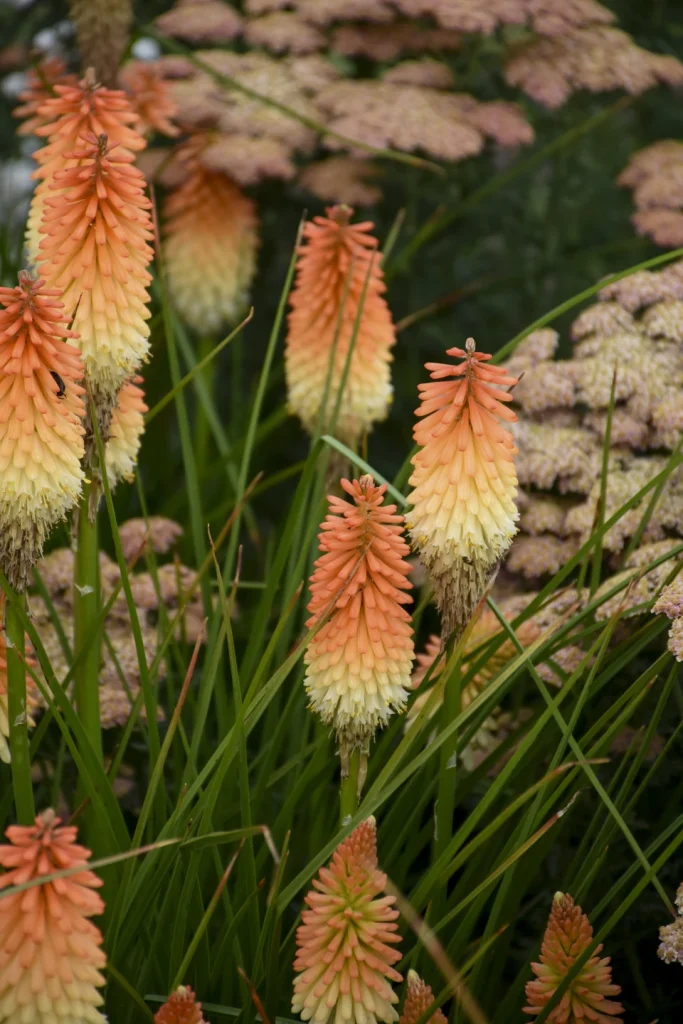
The varieties discussed herein, from the enchanting At Last and Peach Drift roses to the versatile Double Take flowering quince, Suntastic Peach abelia, and Peaches and Cream Grevillea shrub, exemplify the wondrous diversity and ingenuity of the botanical world.
As we continue to cultivate and appreciate these living works of art, let us cherish and celebrate the enduring allure and practical virtues of roses and shrubs, which enrich our surroundings with their timeless elegance and unwavering resilience.
In the grand tapestry of nature, roses and shrubs stand as enduring symbols of grace, beauty, and fortitude, weaving a narrative of resilience and splendor that continues to captivate and inspire us.
As we tend to these living treasures, let us embrace the profound connection between humanity and the natural world, finding solace and inspiration in the timeless allure of roses and shrubs.
Perennials, annuals, and foliage plants are all essential components of a vibrant and diverse garden. Each type brings its own unique characteristics and beauty, contributing to the overall aesthetic and atmosphere of the outdoor space.
In this essay, we will delve into the fascinating world of perennial, annual, and foliage plants, exploring their individual features and the contributions they make to the garden landscape.
Let us begin by examining the perennial plants, which are known for their enduring nature and ability to grace the garden year after year.
The Firefly Peach Sky yarrow, with its captivating peach, orange, cream, and yellow flowers, offers a stunning display of color that evolves as the blooms mature.
Thriving in zones 3-8, this resilient plant adds a dynamic element to any garden setting. Similarly, the Pyromania Hot and Cold Kniphofia, or red hot poker plant, boasts spiky flowers that transition from peachy to creamy, creating a visually striking focal point.
Its resilience in zones 5-9 and resistance to drought, salt, deer, and rabbits make it a valuable addition to any garden.
Moving on to the Venti Tequila Sunrise dahlia, we encounter a showy and vigorous plant that lives up to its name with peach-toned double flowers and coral tips.
While hardy in-ground in zones 8-10, it requires tuber storage indoors over winter in colder zones, showcasing the adaptability and care that perennial plants may demand.
Finally, the Fresco Apricot echinacea stands out with its tall, narrow stature and large zinnia-like flowers in a delightful peachy-apricot shade, offering nearly continuous blooms from June through October in zones 4-9.
Transitioning to annual plants, we encounter the Celway Salmon cockscomb, which boasts velvety, spiked flower clusters in a captivating salmon color.
Its longevity in bouquets and suitability for cutting gardens make it a practical and visually appealing choice.
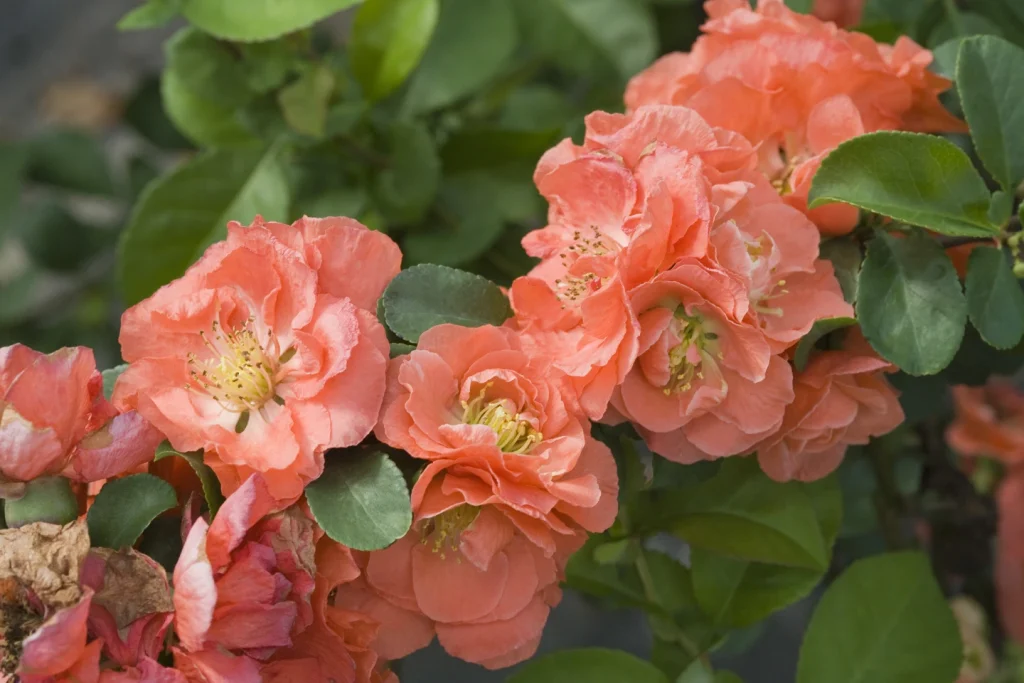
The Vivacia Orange dianthus, categorized as an annual, showcases low-growing, creeping foliage and large, solid, light-orange blooms, adding a pop of color to any garden space.
Additionally, the Superbena Peachy Keen verbena stands out as a vigorous grower that blooms continuously from spring through fall without deadheading, demonstrating its resilience and enduring beauty.
Continuing with the annuals, the Toucan Coral Canna captivates with its dramatic tropical vibe and long-blooming peach flowers, while also displaying tolerance to heat, humidity, and drought.
Lastly, the Begonia Cocoa Enchanted Sunrise, with its dark chocolate-colored leaves and striking peach-toned flowers, adds an element of intrigue and contrast to shaded areas, showcasing the diversity and visual impact that annual plants can bring to the garden.
Finally, we turn our attention to foliage plants, which play a crucial role in providing texture, structure, and visual interest to garden landscapes.
The Northern Exposure Amber coral bells, with its low-growing, densely mounded form and evergreen leaves, thrives in both full shade and full sun, offering versatility and year-round appeal.
Similarly, the Coleus Fancy Feathers Copper, with its whimsical tuft of narrow, yellow-orange, and pink leaves, brightens shady spots and containers, uplifting both the garden environment and the observer’s mood.
In conclusion, the world of perennial, annual, and foliage plants is rich and diverse, offering a myriad of options for garden enthusiasts to explore and incorporate into their outdoor spaces.
Each type of plant brings its own unique beauty, resilience, and charm, contributing to the overall tapestry of colors, textures, and forms that define a well-rounded garden.
Whether it’s the enduring nature of perennials, the seasonal bursts of annuals, or the structural elegance of foliage plants, each category plays a vital role in creating a captivating and harmonious garden landscape.
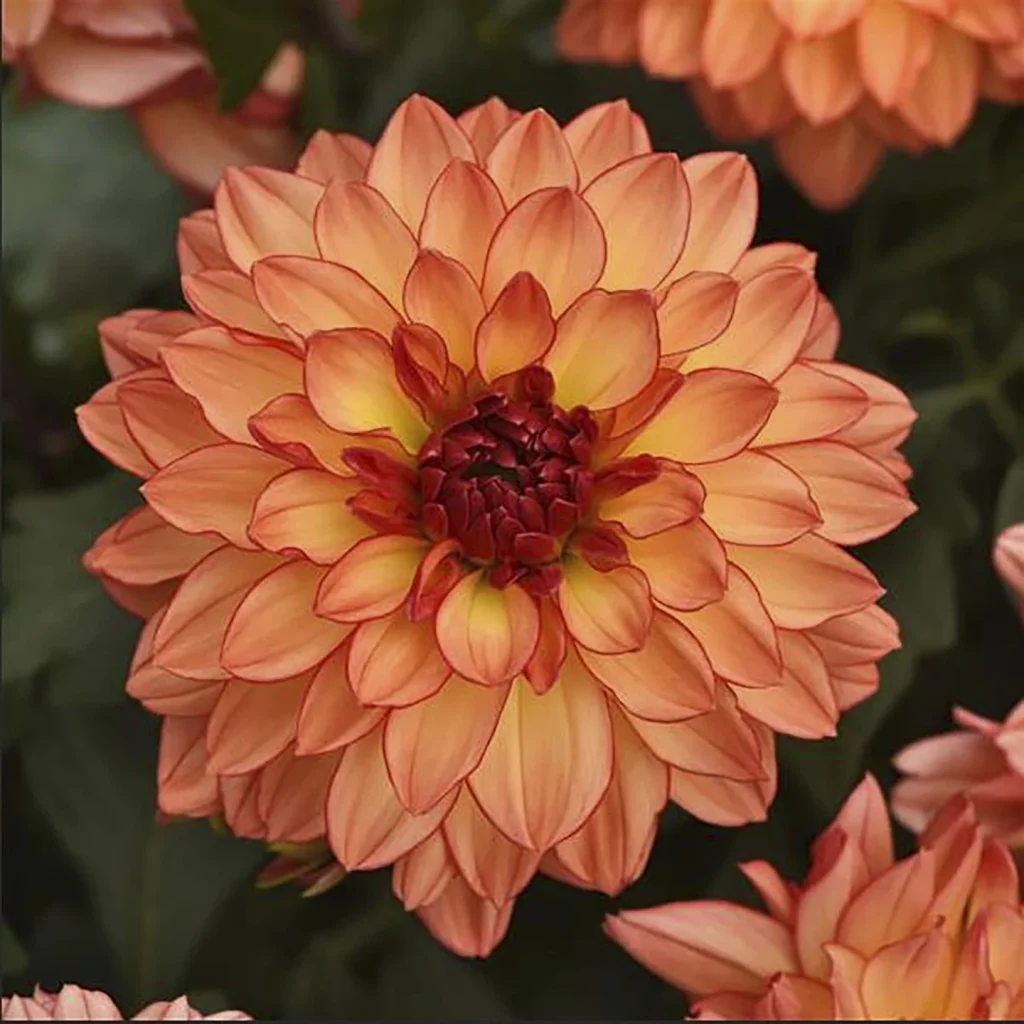
In summary, the intricacies and nuances of perennial, annual, and foliage plants contribute to the multifaceted beauty of gardens, enriching outdoor spaces with their enduring charm and visual appeal.
As gardeners and enthusiasts, we are fortunate to have such a diverse array of plants at our disposal, each offering its own unique contributions to the ever-evolving tapestry of natural beauty.
